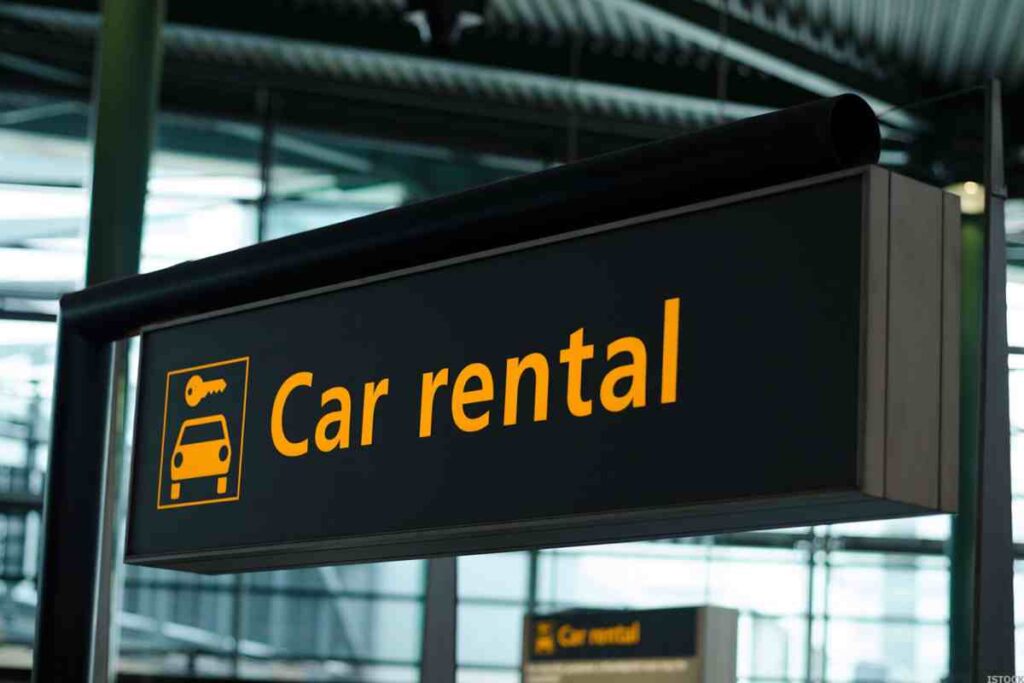Buying a car is an exciting experience, but it comes with responsibilities. One of the most important things you need to do before driving your new car is to get auto insurance. Auto insurance protects you financially in case of accidents or damage. In this article, we’ll guide you through the steps to get auto insurance before you buy a car. We’ll cover why it’s important, how to compare different insurance options, and what information you’ll need to get started.
Why Do You Need Auto Insurance Before Buying a Car?

Having auto insurance before buying a car is crucial for several reasons. Firstly, nearly every state requires you to carry a minimum amount of car insurance to legally drive. This means that without insurance, you won’t be able to drive your new car off the dealer’s lot. Car dealerships typically require proof of insurance before allowing you to take possession of the vehicle. This ensures that both you and the dealership are protected in case of any accidents or damages that might occur as soon as you drive away.
Additionally, if you’re financing your car through a loan, lenders will require you to have insurance coverage. This is because the lender wants to protect their investment in the vehicle. They may require specific coverages such as liability, collision, and comprehensive insurance to ensure that the car is adequately protected against various risks. Without this coverage, you may not be able to secure the loan needed to purchase the car.
Moreover, having auto insurance in place before buying a car allows you to drive with peace of mind. Accidents can happen at any time, and having insurance ensures that you are financially protected from the moment you start driving your new car. It also allows you to budget for the cost of insurance along with your loan payment and vehicle maintenance expenses.
In summary, getting auto insurance before buying a car is not only a legal requirement but also a practical step to protect yourself, your investment, and others on the road. It ensures that you can drive your new car safely and responsibly from day one.
Can We Get A Car Insurance Quote Without A Car?
Yes, you can get a car insurance quote without owning a car by opting for a non-owner car insurance policy. This type of insurance is designed for individuals who do not own a car but may need to drive occasionally, such as when renting a car or driving someone else’s car with their permission.
Here are some key points about non-owner car insurance:
- It provides liability coverage for bodily injury and property damage if you’re involved in an accident while driving a car you do not own.
- It’s beneficial if you need to maintain continuous insurance coverage to avoid higher rates in the future due to a lapse in coverage.
- To qualify, you must have a valid driver’s license and you cannot own a car. Most insurers also require that you don’t have regular access to a car, for example, a car owned by another household member.
Insurance Policies for Off-road Vehicles
If you’re interested in getting a non-owner car insurance quote, you can contact insurance companies directly or use their online quote tools. Provide your personal details, driving history, and coverage preferences, and the insurance company will assess your information to provide you with a quote. Remember, this type of policy is typically secondary coverage and is used if the car owner’s insurance doesn’t fully cover the damages in an accident.
How to Get Auto Insurance Before Buying a Car

Getting auto insurance before purchasing a car is a smart move, especially if you want to drive your new vehicle off the dealership lot immediately after purchase. Here’s a step-by-step guide to help you secure insurance in advance:
- Research and Compare Quotes: Start by shopping around for multiple insurance quotes. This will help you find the best deal and coverage options. Use online tools and resources to compare quotes from different insurance providers.
- Determine Your Coverage Needs: Decide on the type and amount of coverage you need. Consider factors like your budget, the value of the car, and your driving habits. Common coverage options include liability, collision, comprehensive, and uninsured/underinsured motorist coverage.
- Gather Necessary Information: Collect information about the drivers you want covered under the policy, such as their driver’s licenses and driving history. If you know the make and model of the car you’re planning to buy, gather details like the vehicle identification number (VIN), year, and model.
- Choose a Policy and Insurer: Based on your research and coverage needs, select a policy and insurer that best fits your requirements. Make sure to read the terms and conditions of the policy carefully before finalizing your decision.
- Set the Policy Start Date: Choose a start date for your policy that aligns with the day you plan to take possession of your new car. This ensures that you have coverage from the moment you drive the car off the lot.
- Finalize the Purchase: Once you’ve chosen a policy, contact the insurance provider to finalize the purchase. Provide any additional information they may need and make the necessary payment to activate the policy.
Understanding Rideshare Insurance Rates
Remember, you must have at least the minimum required insurance coverage to legally drive the car in your state. It’s advisable to arrange for your new insurance policy to start on the day you plan to pick up your new car. If you already have an existing policy, you can simply update it to include your new vehicle.
How to Claim Auto Insurance?
Filing an auto insurance claim is a necessary step to have the resulting damages or injuries covered following an accident. Here’s a step-by-step guide on how to do it:
- Report the Incident: If you’re involved in an accident, it’s important to report it to the police. Then, follow up and get a copy of the report.
- Gather Information: Collect as much information as possible regarding the accident. This includes the driver’s contact and insurance information, the year, make, and model of their vehicle, license plate information, contact information for any passengers or witnesses, time, date, and location of the incident, and a brief description of the event. Also, take photos of all damage to your vehicle, the other vehicle or property involved, and the area surrounding the event.
- Contact Your Insurance Company: Notify your insurance agent or provider as soon as possible. Be ready to provide at least some of the information listed above.
- Submit a Claim: This step involves filling up paperwork, which includes evidence of the covered loss, and submitting it to the insurance company.
- Claim Investigation: The insurer will then investigate the validity of the claim. If the claim is found to be legitimate, the insurance carrier will issue the payment to the policyholder or an authorized party.
- Payment: USAA, for example, will send the repair amount minus your deductible.
Remember, every insurance company has its own process for issuing claims, so the steps may vary slightly. However, this guide should give you a good idea of what to expect.
How to Transfer Insurance from an Old Car to a New Car?

When you purchase a new car and need to transfer your insurance from the old one, the first step is to contact your insurance company. Inform them about the new purchase and inquire about the grace period they offer for transferring the policy.
It’s essential to review your current policy to ensure that the coverage levels meet any new requirements, especially if you’re financing the new vehicle. Provide your insurer with the new car’s details, including the registration number and any modifications. They will then give you a quote for the new policy based on the new car’s make and model, and any changes in your driving record.
If the terms and the quote are acceptable, you can proceed to update your policy. This update will involve adding the new car to the policy and removing the old one if it’s no longer in use. Ensure you receive the updated proof of insurance for your new car, which is necessary for legal and registration purposes.
Why Insurers Care About Your Annual Mileage
Keep in mind that while the policy transfer doesn’t incur an extra fee, your premium may change depending on the specifics of your new car and coverage. It’s crucial to complete this process promptly to maintain continuous coverage and comply with legal requirements.
Insurance for New vs. Used Cars
When it comes to insuring new versus used cars, there are several factors to consider. Generally, new cars tend to have higher insurance premiums compared to used cars. This is because new cars have a higher market value, which means the cost to repair or replace them is greater. Additionally, new cars often come with advanced safety features and technology, which can sometimes lead to discounts on insurance premiums. However, these features can also make repairs more expensive, contributing to higher overall insurance costs.
On the other hand, used cars typically have lower insurance premiums because their market value is lower. The cost to repair or replace a used car is generally less than that of a new car, which can result in lower insurance rates. However, older used cars may lack modern safety features, which could affect the availability of certain discounts. It’s also important to consider that if a used car is particularly old or has high mileage, it might not be worth carrying full coverage, such as comprehensive and collision insurance.
Ultimately, the decision between insuring a new or used car depends on various factors, including the car’s value, safety features, and your personal preferences and budget. It’s always a good idea to compare quotes from multiple insurance providers to find the best coverage and rates for your specific situation.
What Are The Penalties in US For Driving Without Insurance?
Driving without insurance in the United States can result in severe penalties, which vary by state but generally include fines, license suspension, and vehicle impoundment. Financial penalties can range from a few hundred to several thousand dollars, depending on the state and whether it is a repeat offense.
Additionally, uninsured drivers may face the suspension of their driver’s license and vehicle registration until they can provide proof of insurance. In some states, driving without insurance can lead to community service requirements or even jail time, particularly for repeat offenders.
Beyond these legal consequences, uninsured drivers are also financially liable for any damages or injuries they cause in an accident, which can result in significant out-of-pocket expenses and potential lawsuits. Furthermore, insurance companies may charge higher premiums for reinstating coverage after a lapse due to driving without insurance, reflecting the increased risk associated with an uninsured driving history.
Popular Auto Insurance Companies in the US
Several auto insurance companies in the USA are popular due to their comprehensive coverage options, customer service, and competitive pricing. Here are some of them:
- USAA: USAA holds the top spot for best car insurance company. They offer a wide range of coverage options and are known for their excellent customer service. However, their services are only available to military members, veterans, and their families.
- State Farm: State Farm is the largest auto insurance company in the U.S., with 17% of the market. They offer a variety of coverage options and are known for their comprehensive policies.
- GEICO: GEICO is one of the biggest car insurance companies and is known for its affordable rates. They offer a variety of coverage options and discounts.
- Progressive: Progressive is known for its wide range of coverage options and discounts. They also offer a unique ‘Name Your Price’ tool that helps you find a policy that fits your budget.
- American Family: American Family is known for its customizable policies and excellent customer service.
- Nationwide: Nationwide is recognized for its wide range of coverage options and excellent customer service.
- Erie: Erie is known for its comprehensive coverage options and excellent customer service.
- Travelers: Travelers offers a variety of coverage options and is known for its excellent customer service.
Remember, the best insurance company for you will depend on your specific needs, budget, and the type of coverage you’re looking for. It’s always a good idea to get quotes from multiple companies and compare their offerings before deciding.
Temporary Insurance Options
Temporary auto insurance can be a great solution if you need coverage for a short period. Here are some options to consider:
- Standard Policy with Early Cancellation: Most insurance companies don’t offer true temporary policies, but you can purchase a standard six-month policy and cancel it early when you no longer need coverage. This approach ensures you have full coverage without committing to a long-term policy.
- Non-Owner Car Insurance: If you don’t own a car but frequently borrow or rent vehicles, non-owner car insurance can provide liability coverage. This type of policy is ideal for those who need insurance for a short time but don’t have a vehicle of their own.
- Pay-Per-Mile Insurance: Pay-per-mile insurance charges you based on the number of miles you drive. This can be a cost-effective option if you only need coverage for a limited time and don’t plan to drive much.
- Rental Car Insurance: If you’re renting a car, you can purchase insurance directly from the rental company. This coverage is typically available for the duration of your rental period and can include liability, collision, and comprehensive coverage.
- Permissive Use: If you’re borrowing someone else’s car with their permission, you may be covered under their existing insurance policy. However, it’s essential to confirm this with the car owner and their insurance provider to ensure you’re adequately covered.
- Distant Student Discounts: If you are a student who only drives during school breaks, you might qualify for a distant student discount. This can reduce your premium significantly while still providing coverage when you need it.
- Event-Based Insurance: Some insurers offer event-based insurance for specific occasions, such as road trips or moving. This type of coverage is ideal if you need insurance for a particular event or journey.
These options provide flexibility and can help you stay insured without committing to a long-term policy.
FAQs
Q 1. What is a deductible in auto insurance?
Ans. A deductible in auto insurance is the amount you pay out of pocket before your insurance coverage kicks in. For example, if you have a $500 deductible and you have a $2,000 claim, you will pay $500 and your insurance company will pay $1,500.
Q 2. What factors can affect my auto insurance premium?
Ans. Several factors can affect your auto insurance premium, including your driving history, the type of car you drive, where you live, your age, your gender, and the amount of coverage you choose.
Q 3. What is a no-claims bonus in auto insurance?
Ans. A no-claims bonus (NCB) or no-claims discount is a reward given by insurance companies to policyholders who do not make any claims during their policy term. The NCB is usually given as a discount on the premium at the time of policy renewal.
Q 4. What happens if I lie on my auto insurance application?
Ans. Lying on your auto insurance application, also known as insurance fraud, can lead to serious consequences. Your insurance company could deny your claims, cancel your policy, or in some cases, you could face legal penalties.
Q 5. How does auto insurance work if I’m leasing or financing a car?
Ans. If you’re leasing or financing a car, the lender may require you to have certain types of auto insurance coverage, such as comprehensive and collision coverage. This is to protect their investment in the car.
Q 6. How often should I review my auto insurance policy?
Ans. It’s a good idea to review your auto insurance policy at least once a year, or whenever you have a major life change, such as moving to a new address, adding a new driver to your policy, or buying a new car.
Conclusion
In conclusion, obtaining auto insurance before buying a car is a crucial step that ensures you are protected from the moment you drive off the lot. By understanding your insurance needs, comparing providers, and securing the right coverage, you can make an informed decision that provides peace of mind and financial security. Whether you are a first-time buyer or an experienced driver, taking the time to research and purchase auto insurance in advance will not only meet legal requirements but also safeguard your investment and well-being on the road. Remember, being proactive about your insurance needs is the best way to drive confidently and safely.

Milo Thistlethwaite is an auto insurance guru with over 8 years of experience in the industry. Holding a CPCU (Chartered Property Casualty Underwriter) certification, Milo is passionate about helping drivers find the best coverage for their needs. As an author on the ‘FundFinesse’ blog, Milo writes clear, easy-to-understand articles about auto insurance.


